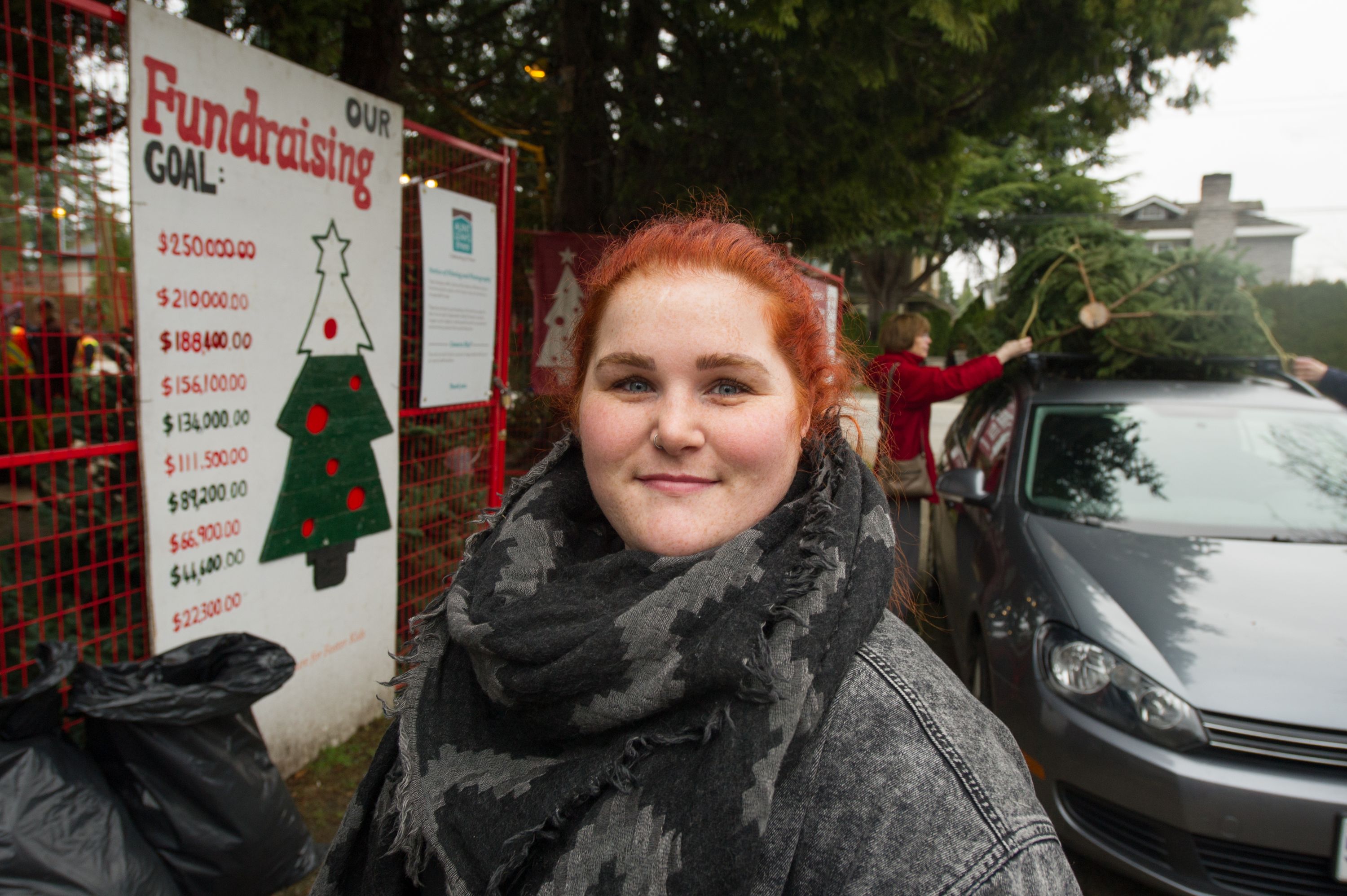These Christmas trees mean more than tinsel: They can send a child to college

Credit to Author: Lori Culbert| Date: Sat, 14 Dec 2019 16:00:06 +0000
Despite bouncing between 25 foster homes and three group homes during her childhood, Sara H. broke the odds by graduating from high school and going to university.
Without parents, though, she needed help along the way. That came first from the provincial government, the official guardian of foster children until they turn 19. And later from the Aunt Leah’s charity that provides help to youth in their early adult years when they no longer get the financial and emotional supports they received as foster children.
“Aunt Leah’s came in and they allowed me to pursue my dream of nursing and to have a better life and to give back to society. And to be able to pay my rent and buy food and go to school,” said Sara, now 27, who asked that her last name not be used. “If they didn’t enter that pivotal moment in my life, I wouldn’t have made it.”
Aunt Leah’s provided housing, educational support and other services to 349 people in the 2018-2019 fiscal year: 245 youth who had aged out of care and 28 teens in care — plus 76 of their babies and children. The charity had revenue of $4.2 million, and 14 per cent of that came from its Christmas tree sales.
The first tree lot started 25 years ago on Granville Street, and the operation has expanded to six locations in Vancouver, Coquitlam, Burnaby and North Vancouver. Last December, 653 volunteers sold 6,252 Christmas trees for $587,000. Sales are projected to be higher this year.
“The money raised will go to support our families and young people, just like Sara, who are continuing their education and professional journeys, or focusing on their family’s journey of staying together and celebrating Christmas,” said Aunt Leah’s executive director, Sarah Stewart.
“The revenue from our Christmas tree sales has supported our supportive housing for moms and babies, which has had no dedicated government funding. That’s an important part of our work: keeping families together and preventing them from being separated by the child welfare system.”
Aunt Leah’s Executive Director Sarah Stewart.
In 2018, the B.C. Coroners Service investigated the deaths of 200 youths who died over a six-year period, either just before or after aging out of the foster care system. Its alarming report concluded “young people leaving government care died at five times the rate of the general population of young people in British Columbia.”
The coroner called for improved services for these vulnerable youth after age 19, and the NDP said last year it accepted the report’s recommendations.
When asked this week what changes have been made, the Children and Family Development Ministry said its 2018 budget, announced before the coroner’s report was released, committed $30 million over three years to improve a program called AYA, or Agreements for Young Adults. It offers support to youth after they age out of foster care. The ministry’s statement made no mention of additional funding boosts in the 2019 budget, but did say the 2018 changes led to a third of former foster kids participating in AYA, up from a quarter in previous years.
The statement said government knows it “need(s) to do more to support our youth,” so last year it gathered opinions from 1,500 people with links to the foster care system and is “exploring ways to make some changes now based on this feedback.”
The coroner’s report contained troubling figures about youth who age out of care, including high rates of suicide, drug overdose deaths, mental health issues, and homelessness. These teens had low high school graduation rates and poor employment.
Although some youth leaving care are resilient and successful, they face more challenges than their peers from traditional homes, the report found.
Sara H. outside at Aunt Leah’s Christmas tree lot in Vancouver.
Sara does not remember all the homes she was in after being taken from her mother at age five. She can recall, though, the heartbreak associated with her many moves.
“When I grew up in foster care, I thought things would be good. Then I would come home and my bags were packed at the front door,” she said.
Despite some rocky years, Sara graduated from high school, studied psychology at university and has worked for three years in a group home with special needs youth.
She discovered she likes caring for people and was accepted to BCIT’s nursing program in January, but she is still saddled with student debt and had no idea how to pay for more schooling. She had aged out of government assistance programs such as AYA.
She qualified for the tuition waiver program but the money she earns at the group home won’t cover her other expenses while she’s a full-time student. Aunt Leah’s has bridged that financial gap.
The agency also provided Sara with someone to phone when she needs advice — something she misses since losing her social worker at age 19.
“Money’s great, it helps. But it’s nice to have someone to call and check in and ask questions,” she said. Aunt Leah’s “allowed me to not have to choose between pursing my dream and supporting myself.”
Aunt Leah’s tries to mimic what a traditional family would do for its children.
“If a 27-year-old decides, ‘I want to take this intensive, three-year nursing course because this is the career I want,’ families rally around that and support their kids. So we are doing the same thing,” Stewart said.
Each year in B.C., 780 youth age out of foster care at 19. Stewart said a caring society can make a difference in those kids’ lives.
Twitter: @loriculbert